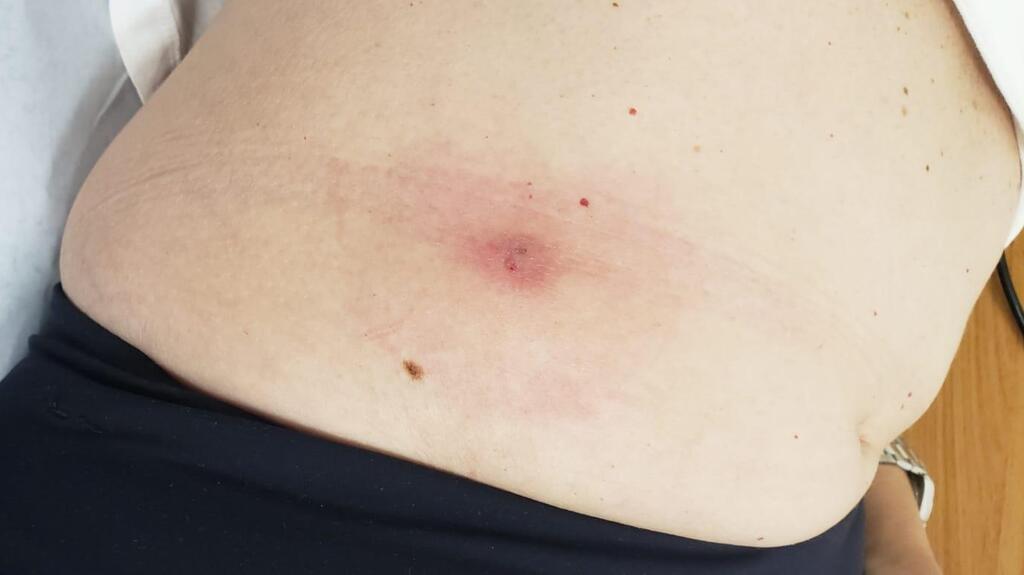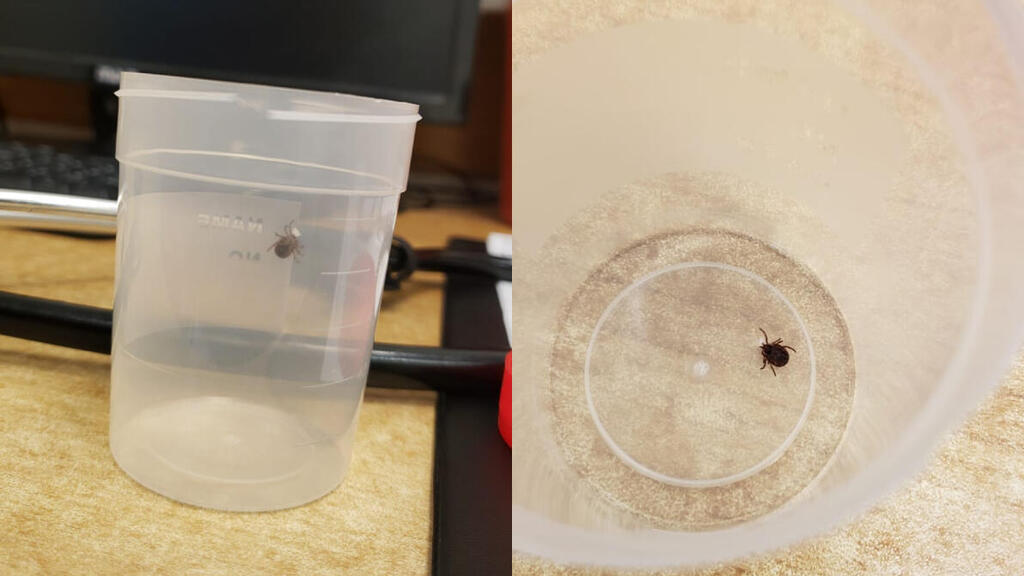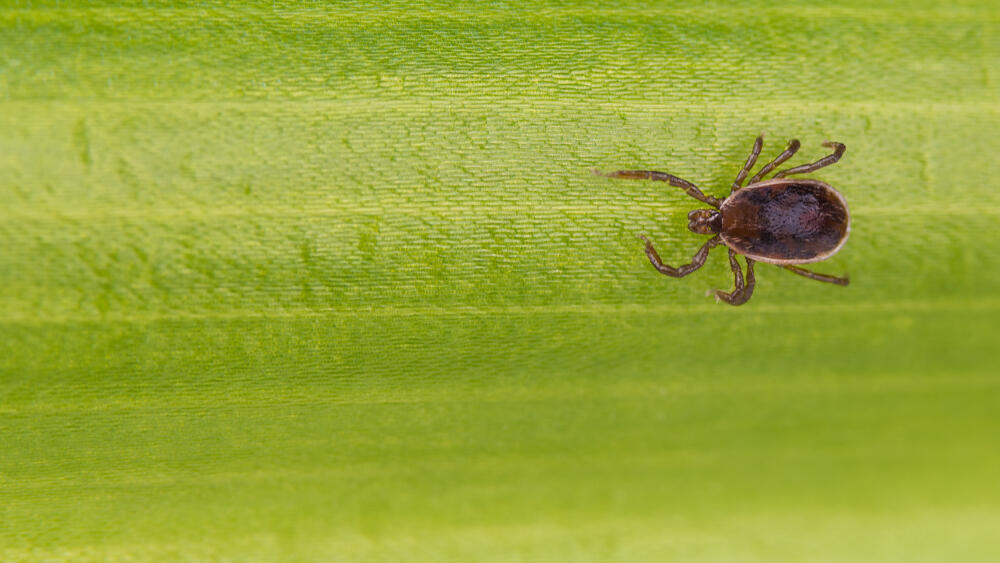A resident of Tel Aviv experienced relentless itching in her abdomen while traveling in several countries. When she returned to Israel and the itching worsened, she turned to doctors who discovered a live tick inside her body.
Read More:
The doctors removed the tick, which can potentially transmit serious infections, and the woman received antibiotic treatment to prevent infection.
3 View gallery


Israeli woman discovers tick under her skin upon returning from travels
(Photo: Terem Emergency Medical Centers)
The patient, a 55-year-old woman, began to itch while traveling in several countries. She recounted to her doctors, "I thought maybe I had a minor irritation, but I didn't think much of it because the itching stopped, and I didn't feel anything. After a few days, I traveled to another destination, and when I returned to Israel, I noticed redness around the spot where I had the irritation, but I didn't feel anything out of the ordinary."
Two days after her visit to Europe, she flew with her husband to another destination, where the redness on her skin slightly expanded, and the itching worsened. She shared, "My husband said that when we return to Israel, we should go to a dermatologist to have it checked."
When she returned to Israel she went to get it checked, and doctors discovered a tick under her skin in the area of the irritation.
"We have seen cases of insects entering the skin," explained Dr. Catherine Zarmati, "but usually they are discovered within a short time, within a few hours to two days. It is quite rare for a tick, which is a relatively large insect, to live under the skin for such a long time. Since we were concerned about infection, we recommended prescribing antibiotics after removing the tick and advised the woman to continue to do evaluations and a veterinarian examination of the tick species."
Mediterranean spotted fever: Symptoms and risks
Ticks can get to humans in various ways, mostly from animals, especially dogs. One of the dangers is an infectious disease called Mediterranean spotted fever (MSF), which dozens of Israelis have contracted in recent years. Without antibiotic treatment, this disease can be deadly.
MSF is transmitted to humans by the brown dog-tick Rhipicephalus sanguineus, which has a bacterium called Rickettsia conorii. The tick is found on the bodies of dogs, wild boars, and foxes. The disease first appeared in Israel in 1943, and in recent years, the frequency of the disease has reached 0.4 per 100,000 people, with 20 to 50 reported cases of infection per year.
In July 2020, several cases of the disease were discovered in the Haifa area, prompting the Environmental Protection Ministry to issue a warning to the public and call for the treatment of dogs and vegetation to prevent an outbreak.
Mediterranean spotted fever is most common during the summer months. However, additional cases are also reported in September and October. Only about a third of the patients remember being bitten by a tick.
The disease is characterized by three main symptoms, including fever, headache, and rash. The fever can last for several days to two weeks and is accompanied by a faint rash, mainly appearing on the hands and feet. The rash typically shows up on the fourth or fifth day of the illness and lasts for about a week.
Additionally, lymph node swelling in the bite area, muscle aches, nausea, diarrhea, and weakness may occur. In some cases, there may be a dry scab on the bite. In approximately 3% of cases, the disease can be fatal.
The diagnosis of the disease is performed through blood tests that isolate the bacterium. According to the guidelines of the Health Ministry, since the disease can be life-threatening without treatment and there is sometimes a delay in receiving laboratory results, doctors are advised to start immediate treatment based on the patient's symptoms and not wait for the results.
Treatment for the disease involves a five-day round of the antibiotic doxycycline. In mild cases in children and pregnant women, an additional antibiotic such as azithromycin may be prescribed.



